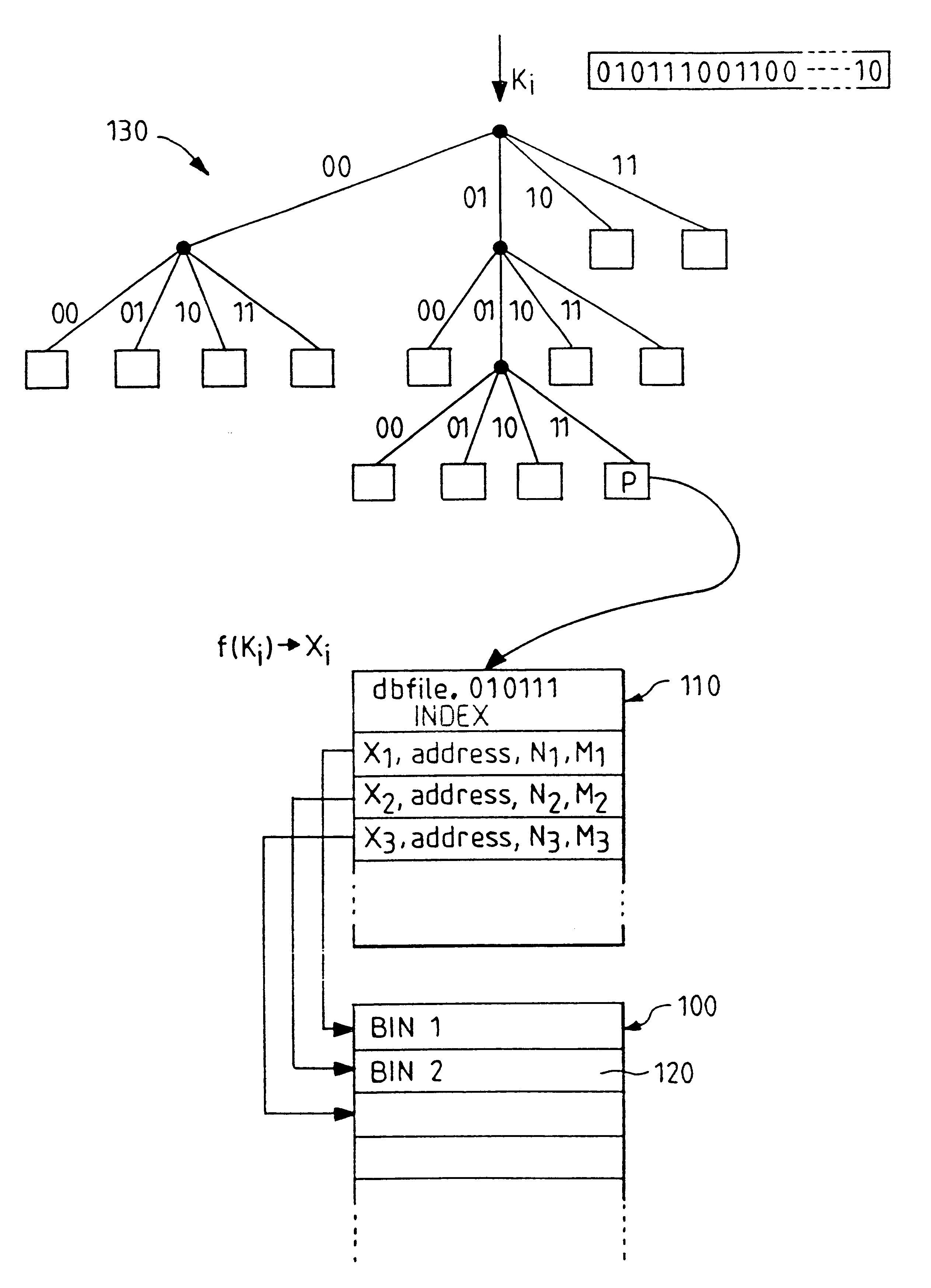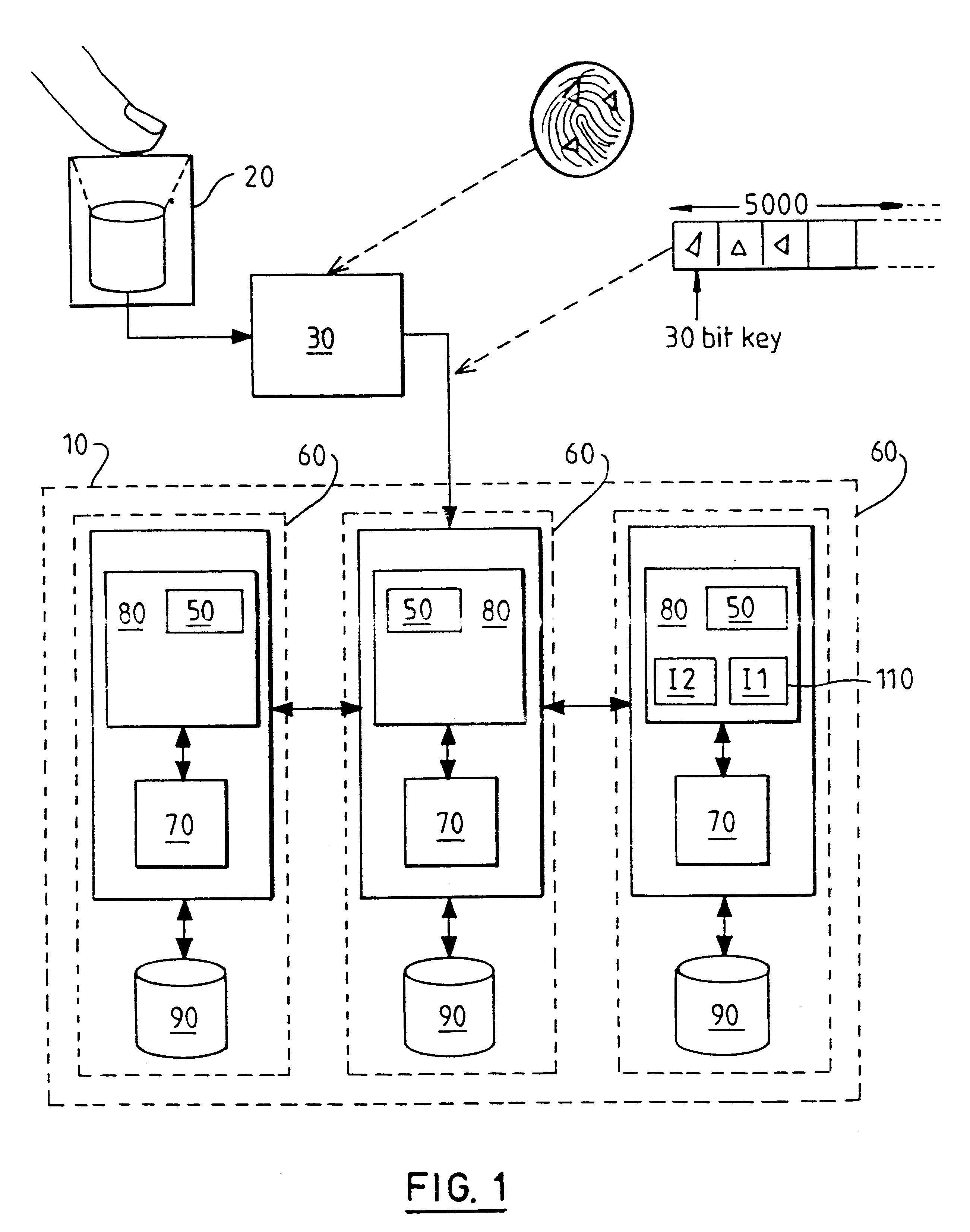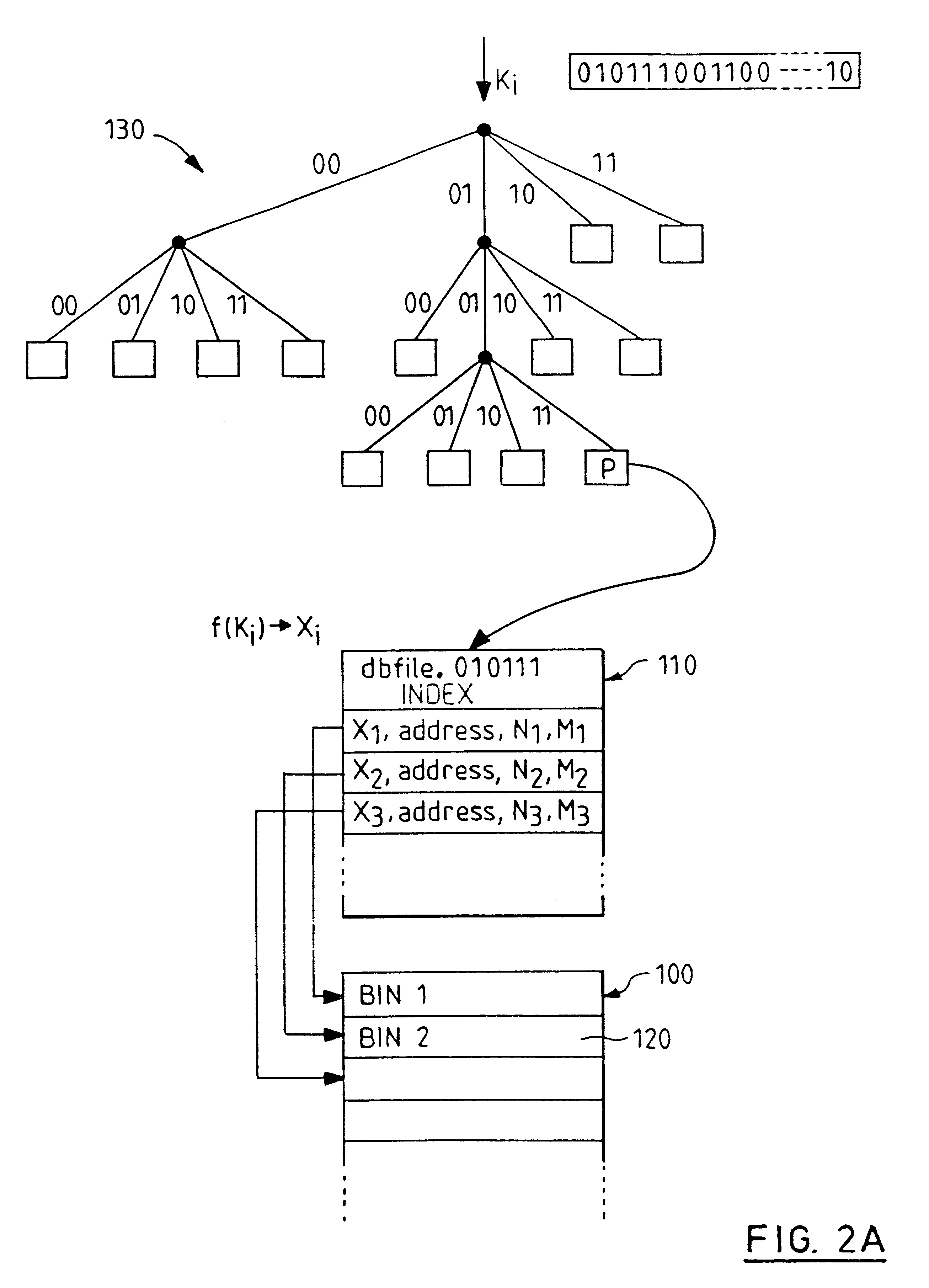Indexed file system and a method and a mechanism for accessing data records from such a system
a file system and data record technology, applied in the field of computer filing system data access mechanism, can solve the problems of poor access performance, slow collision handling part of data access process, and inability to handle large databases in relation to hashing techniques, etc., to achieve efficient access, poor access performance, and efficient access
- Summary
- Abstract
- Description
- Claims
- Application Information
AI Technical Summary
Benefits of technology
Problems solved by technology
Method used
Image
Examples
Embodiment Construction
FIG. 1 shows a file system 10 according to the invention receiving data from a fingerprint scanner 20. The scanner 20 captures an image of a fingerprint and passes this to a connected computer 30 which analyses the image to identify "minutiae" (fingerprint feature points comprising singularities in ridge patterns such as bifurcations or "forks", and ridge endings). These fingerprint feature points are then grouped into local subsets and data is generated which characterises the fingerprint image in the area of the group of feature points. As an example, five thousand feature point subsets may be identified and used to generate the characteristic data describing a single fingerprint. Each of these feature point subsets can be represented by an N bit number (for example, a 30 bit number).
Generation of characteristic data from a fingerprint image is described in detail in a co-pending U.S. patent application Ser. No. 08 / 764,949, which is assigned to the assignee of the present applicat...
PUM
 Login to View More
Login to View More Abstract
Description
Claims
Application Information
 Login to View More
Login to View More - R&D
- Intellectual Property
- Life Sciences
- Materials
- Tech Scout
- Unparalleled Data Quality
- Higher Quality Content
- 60% Fewer Hallucinations
Browse by: Latest US Patents, China's latest patents, Technical Efficacy Thesaurus, Application Domain, Technology Topic, Popular Technical Reports.
© 2025 PatSnap. All rights reserved.Legal|Privacy policy|Modern Slavery Act Transparency Statement|Sitemap|About US| Contact US: help@patsnap.com



